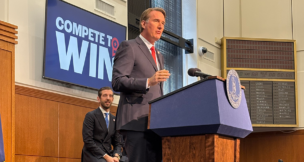Industrial property in Richmond sells for $3.7M
Warwick Trade Center, a 38,056-square-foot flex industrial property in south Richmond, has been sold for $3.7 million, according to Cushman & Wakefield | Thalhimer. CIG 6290 RFO LLC, an affiliate of Cohen Investment Group, sold the property to Standard Properties Inc. on Sept. 27. Located at 6290 Old Warwick Road, the property is on 2.25 […]
Danville Quality Inn sells for nearly $5M
A Quality Inn hotel in Danville with 58 rooms has changed hands. Anil Patel purchased the hotel located at 2175 Riverside Drive in Danville from Riverside Motel Corp. for $4.275 million, according to Colliers. The new owner expects to continue operating the hotel as a Quality Inn under a license from Choice Hotels. Prashant Merchant […]
Roanoke Days Inn sells for $3M
A Roanoke Days Inn has a new owner. Saul Urban LLC purchased the 165-room hotel, located at 601 Orange Ave., from Shri Sainath Enterprises LLC for $3 million, according to Colliers. The new owner is planning a comprehensive renovation of the property and is exploring alternative uses. Prashant Merchant and Nic Wade, both of Colliers, […]
A welcome respite
While the spring was red-hot for the residential real estate market, conditions are expected to cool off in the fall. “The market is definitely stabilizing,” says Liz Moore, board president of Real Estate Information Network Inc., the multiple listing service (MLS) for the Hampton Roads region. “We had such a frenzied market during the pandemic.” […]
17th Street Lofts sells for $4.65M in Richmond
An apartment building in the city of Richmond has changed hands. BP I LLC purchased the 17th Street Lofts, located at 329-333 Oliver Hill Way, from 333 Oliver Hill LLC for $4.65 million, One South Commercial reported. The 20,300-square-foot space includes 24 units and was purchased as an investment. Ryan Rilee and Tom Rosman of […]
Norfolk industrial property sells for $7.3M
A 60,900-square-foot industrial property in Norfolk has been sold for $7.3 million, Colliers announced Sept. 20. Miami-based Jewell Capital LLC acquired the Brookside Industrial building, 4840 Brookside Court, from Maryland-based Hemsman Properties. The property in Norfolk Industrial Park is leased to regional distribution hubs for NB Handy Co. and Transtar Industries. Mark Williford, Will Bradle[...]
22 acres in Innsbrook to be developed into mixed-use
Newton, Massachusetts-based Northland has acquired 22 acres to build a mixed-use development at the “North End” of the Innsbrook area in Henrico County, from Raleigh-based Highwoods Properties. The site is located on the north end of the Innsbrook Corporate Center, at the Intersection of Interstate 95, Nuckols Road and Lake Brook Drive. It already has […]
Stratford Hills Apartments sells for $76.5M in Richmond
Stratford Hills Apartments, a 430-unit residential community in Richmond’s Chippenham Village neighborhood, sold for $76.5 million on Aug. 22, Colliers announced. West 300 North Associates LLC bought the property, located at 2517 W. Tremont Court near Chesterfield County’s Bon Air area, from Stratford Bethany LLC. The property includes 42 buildings, 11 of which are garden-style [&helli[...]
Syska Hennessy hires new assoc. VP for Richmond office
New York City-based engineering firm Syska Hennessy Group, known for projects such as Lincoln Center for the Performing Arts and the Central Intelligence Agency’s Langley headquarters, has named David Wright associate vice president and senior practice area leader for health care in its Richmond office, the company announced Sept. 7. Wright joins Syska after 23 […]
Caroline County building sells for $3M
A 71,252-square-foot office building in Caroline County has sold for just over $3 million, Cushman & Wakefield | Thalhimer announced Sept. 5. The building, located at 24010 Partnership Blvd. in Ruther Glen, is on 47 acres. Atlantic Union Bank sold the building to Partnership Blvd Properties LLC. Will McGoogan of Cushman & Wakefield | Thalhimer […]
$55M affordable housing community moves forward in Richmond
The final two phases of Brady Square, a $55 million affordable housing community in Richmond, now have financing and approvals to move forward, developer Dakota Partners announced Tuesday. The Massachusetts developer announced plans for the community in December 2021. Dakota Partners purchased a 14.4-acre parcel at 2200 Brady St. on Richmond’s South Side. The complex […]
Lynchburg apartments sell for $8.15M
The Gish Flats Apartments in Lynchburg have been sold for $8.15 million, Colliers announced Tuesday. The two buildings at 317 5th St. include 66 units. Eight 8 Properties LLC purchased the apartment buildings from Gish Flats LLC. Gish Flats, near downtown Lynchburg, underwent renovations in 2016, according to Colliers. Charles Wentworth, Garrison Gore, G.S. “Hank” […]





















